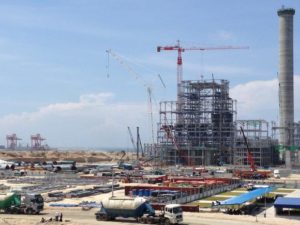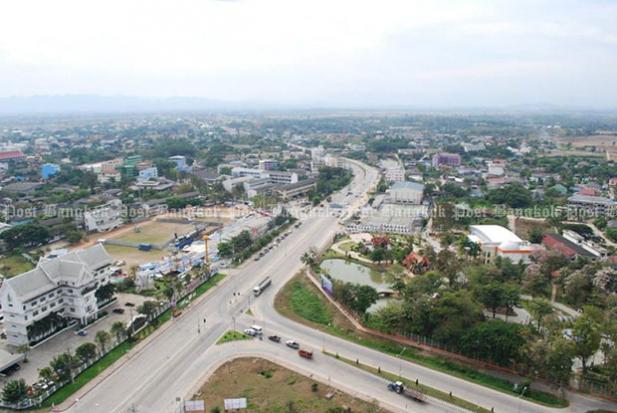
On Sept. 2, Japanese leasing company Orix announced plans to spend $50 million buy more than 10% of Vietnam’s Bitexco Power, together with Singapore’s United Overseas Bank.
The stake purchase is to take place in mid-September. The move represents Orix’s first foray into the hydropower sector as the company looks to help meet growing demand for power in the Southeast Asian country.
Orix is among the newest foreign investors in Vietnam’s electricity market. Previously the country’s power was supplied solely by state-owned Electricity of Viet Nam, but the industry has gradually has opened to private and foreign investors. In its revised Power Development Plan 2011-2020, or PDP VII, which was published in March and recently extended to 2030, Vietnam spelled out its plans to open the electricity market.
Power hungry
Demand for electricity is soaring in Vietnam as the economy develops and household incomes rise. Industry accounts for more than 53% of consumption, while households use around 35%. Electricity consumption in the country of more than 93 million people is expected by 10.5% annually from 2016 to 2020, and 8.0% annually over the following decade, based on estimated economic growth of 7.0% annually over the next 15 years.
To meet that demand, the country has set targets to increase power generation and to raise up to $148 billion for energy development from 2014 to 2030, not including build-operate-transfer, or BOT, arrangements.
The government’s primary means of fundraising will be to privatize companies that operate under its three big energy companies: Viet Nam Electricity (EVN), PetroVietnam (the parent company of PetroVietnam Gas), and the Vietnam National Coal and Mineral Industries Group, also known as Vinacomin.
In addition to issuing government-backed bonds, Vietnam is looking for foreign direct investment and other aid, as well as international commercial financing and loans from multilateral lenders to fund energy projects.
Outsiders welcome
Among 86 projects planned under PDP VII, 18 are designated for foreign investors. Of these, six projects have received operating licenses from the government, with the largest investors coming from China, the U.S., South Korea and Japan.
The energy sector is expected to be the next major driver for foreign direct investment in Vietnam. The sector is forecast to attract $4.5 billion in FDI this year, up 60% on the year.
Historically, Vietnam has depended heavily on coal-fired plants and hydropower. It is hoping to develop renewable energy, including wind, solar, biogas, with overseas help. It aims to generate 6.5% of its total consumption from renewables by 2020, and 10.7% by 2030.
Vietnam has an estimated potential wind power of 513,360 megawatts. It receives between 2,000 and 5,000 hours of sunshine annually with an energy of 150 kilocalories per square meter.
The authorities are soliciting competition for green energy projects, having set a target of cutting carbon dioxide by 8% to 10% by 2020 versus 2010 levels. It is hoping to spur investment in this area by providing incentives in the form of investment capital, taxation and land use rights.
Leaders in wind power such as Danish turbine manufacturer Vestas and South Korea’s Woojin Construction are active in the country. General Electric of the U.S. has signed a memorandum of understanding to develop some 1,000MW of wind farms over the next 10 years.
Solar power investors from South Korea, such as Hanwha and Solar Park, have recently visited Vietnam to conduct feasibility studies, after Belgium’s Enfinity, Malaysia’s Timur and Worldtech of the U.S. failed to complete projects.
There are more than 50 approved wind power projects and a dozen solar power memorandums signed, but few projects have gotten underway due to the low price offered by EVN and vague investment regulations.
Vietnam has raised its wind power purchase price from 7.8 cents to 9.8 cents per kilowatt-hour for offshore farms, and at least 12 cents per kilowatt-hour for solar power. However, investors had hoped for a price that was at least 30% higher than the new price, and would be stable for the first 10 years, to be reduced by 10% over the following decade.
Competition in Vietnam’s electricity market is expected to officially begin in 2017, followed by the wholesale electricity market in 2019 and the retail market by 2021. Buyers will be able to choose their supplier when the market is fully launched, with prices based on market mechanisms, according to Nguyen Anh Tuan, director of the Electricity Regulatory Authority of Vietnam.
Source: http://asia.nikkei.com/Politics-Economy/International-Relations/Vietnam-trying-to-juice-up-power-sector-with-foreign-investment



